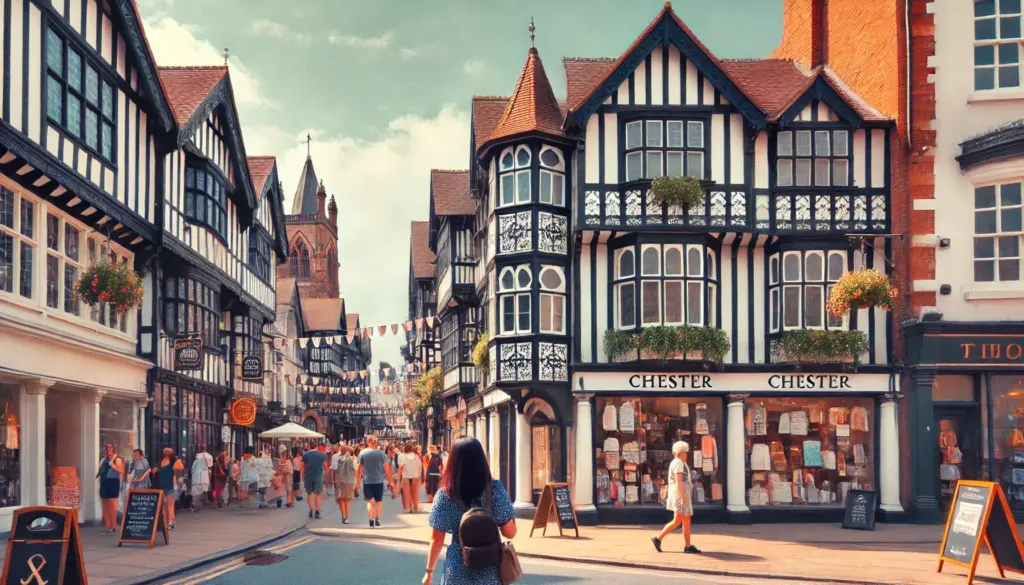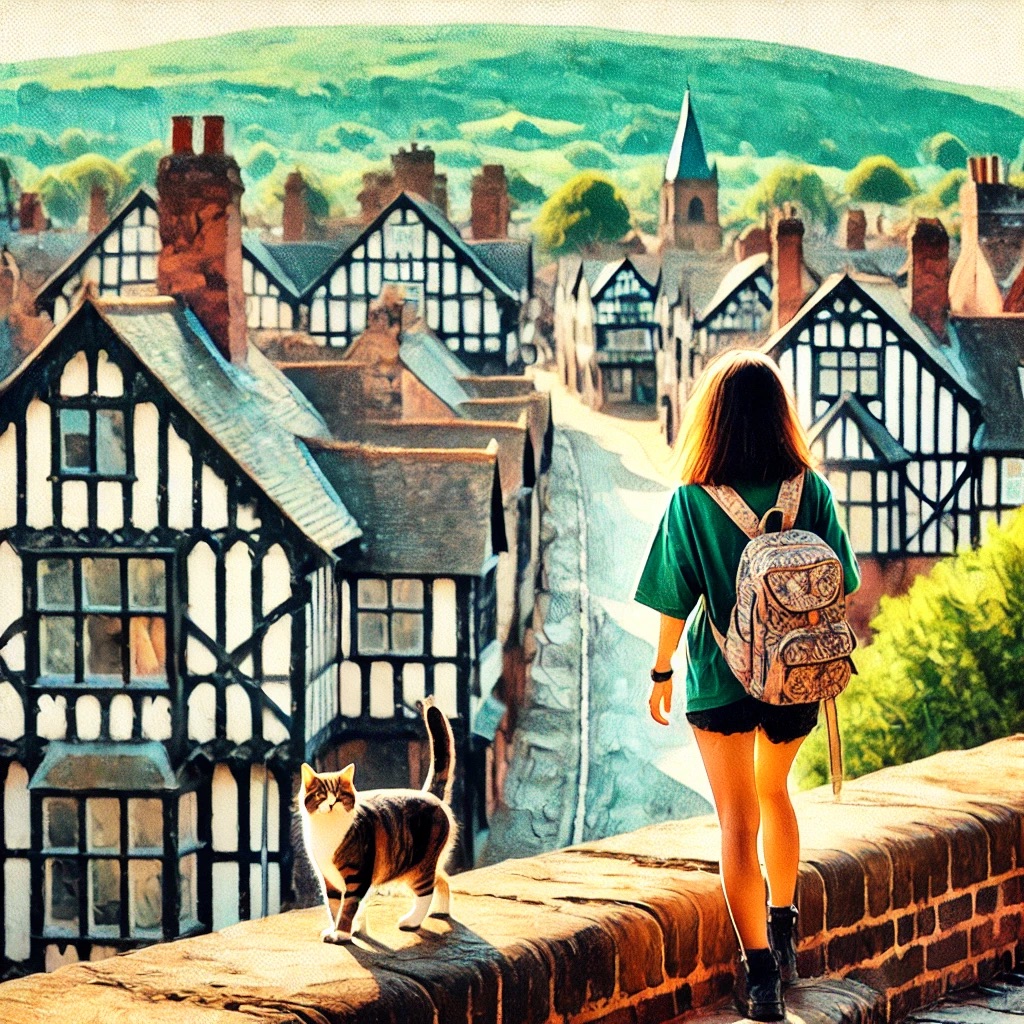ChatGPT:Chester is a historic city located in the northwest of England, close to the border with Wales. It is known for its well-preserved Roman walls, which encircle the city and offer a unique walking path. Chester’s rich history is evident in its architecture, including medieval buildings and the distinctive black-and-white timbered houses, known as “the Rows,” which feature unique two-level shopping galleries.
The city is also home to Chester Cathedral, a beautiful Gothic structure with a rich history dating back to the 11th century. The River Dee runs through Chester, adding to the city’s scenic charm. Additionally, Chester is known for its Roman amphitheater, the largest in Britain, and its vibrant cultural scene, with numerous festivals, markets, and events held throughout the year. The combination of historical significance, architectural beauty, and a lively atmosphere makes Chester a unique and attractive destination.
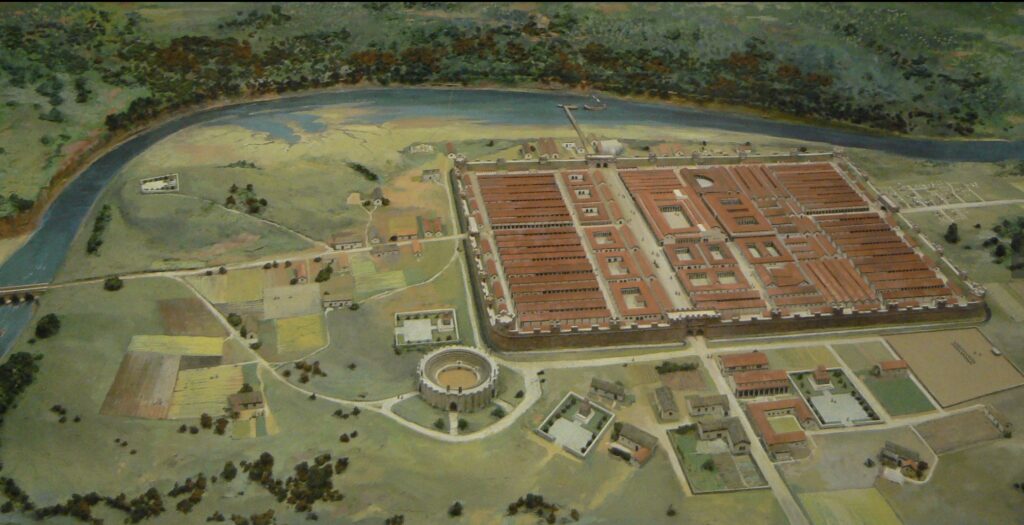
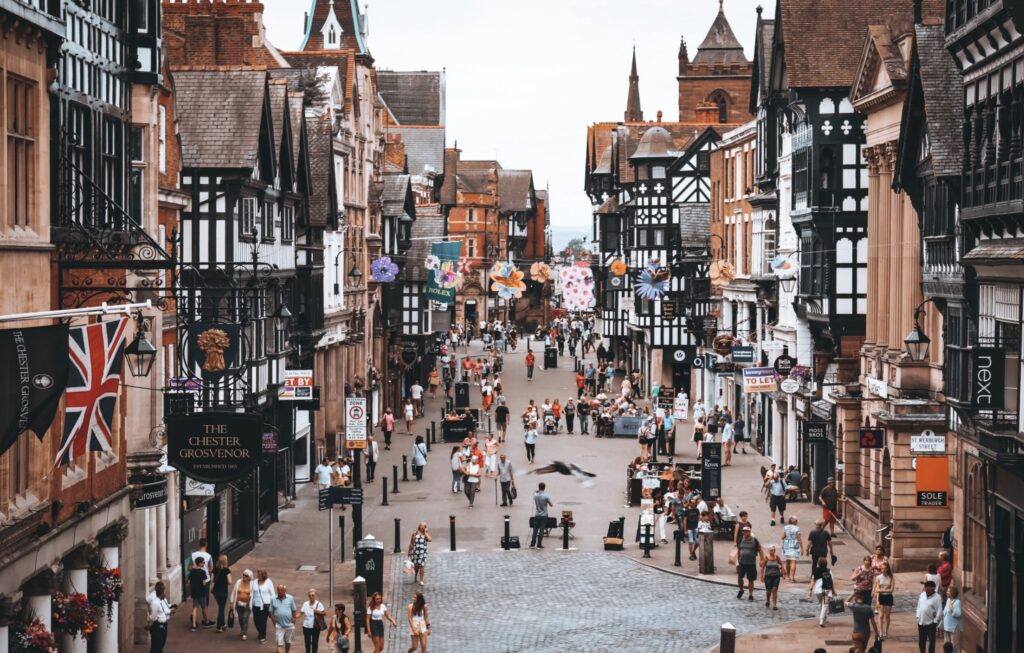
Origin:
Chester’s origins date back to Roman times when it was established as a fortress called “Deva Victrix” around 79 AD. The site was chosen for its strategic location on the River Dee, providing a strong defensive position and easy access to the sea.
History and Development:
- Roman Period:
During the Roman period, Chester was one of the most important military bases in Roman Britain. The city’s layout was organized around the fortress, with a grid pattern of streets and a complex of buildings including barracks, baths, and an amphitheater. The Roman walls, much of which still stand today, were built to protect the settlement. - Post-Roman Era:
After the Romans withdrew from Britain in the early 5th century, Chester remained inhabited but saw a decline in its importance. It became part of the Kingdom of Mercia during the Anglo-Saxon period and was known as “Ceaster,” derived from the Latin “castrum” meaning fortress. - Medieval Period:
Chester experienced significant growth during the medieval period. The city’s walls were extended and strengthened, and Chester became an important trading and administrative center. The unique “Rows” were developed during this time, providing covered walkways above street-level shops. The city also gained a castle, founded by the Normans in the late 11th century, and a cathedral built on the site of a former Benedictine monastery. - Tudor and Stuart Periods:
In the Tudor period, Chester’s economy flourished, benefiting from its position as a port on the River Dee. However, during the English Civil War in the 17th century, Chester was besieged by Parliamentary forces. The city suffered damage and a decline in prosperity during this period. - Georgian and Victorian Periods:
The Georgian era saw Chester’s transformation into a fashionable residential and commercial center. Many elegant Georgian buildings were constructed, and the city became known for its racecourse, the oldest in England. In the Victorian period, Chester continued to grow, with new developments and the expansion of the railway network, which connected it to other major cities. - Modern Era:
In the 20th and 21st centuries, Chester has preserved its historical heritage while modernizing its infrastructure. The city has become a popular tourist destination, known for its well-preserved architecture, cultural events, and attractions such as the Chester Zoo and the Cheshire Oaks Designer Outlet. The restoration and conservation of historic buildings have been key to maintaining Chester’s unique character and charm.
Chester is home to a wide range of historical monuments and tourist attractions, reflecting its rich history and cultural heritage. Here are some of the most notable ones:
- Chester City Walls: The well-preserved Roman walls encircle the city, offering a unique walking route with views of the city and the River Dee. They are one of the most complete sets of city walls in Britain.
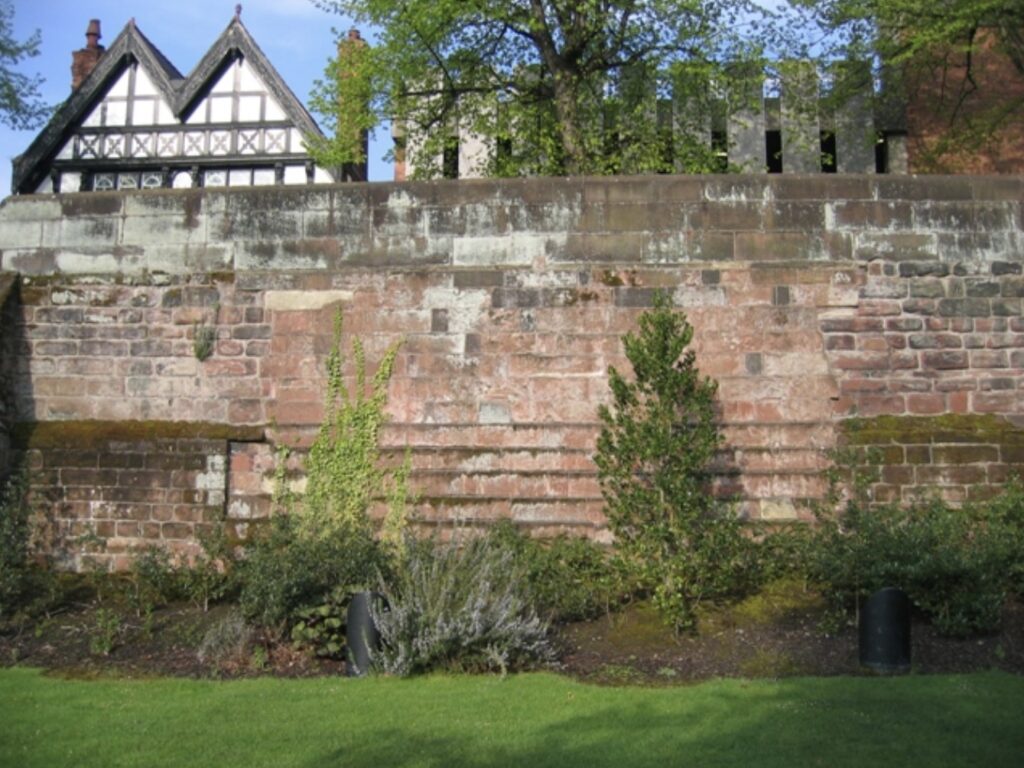
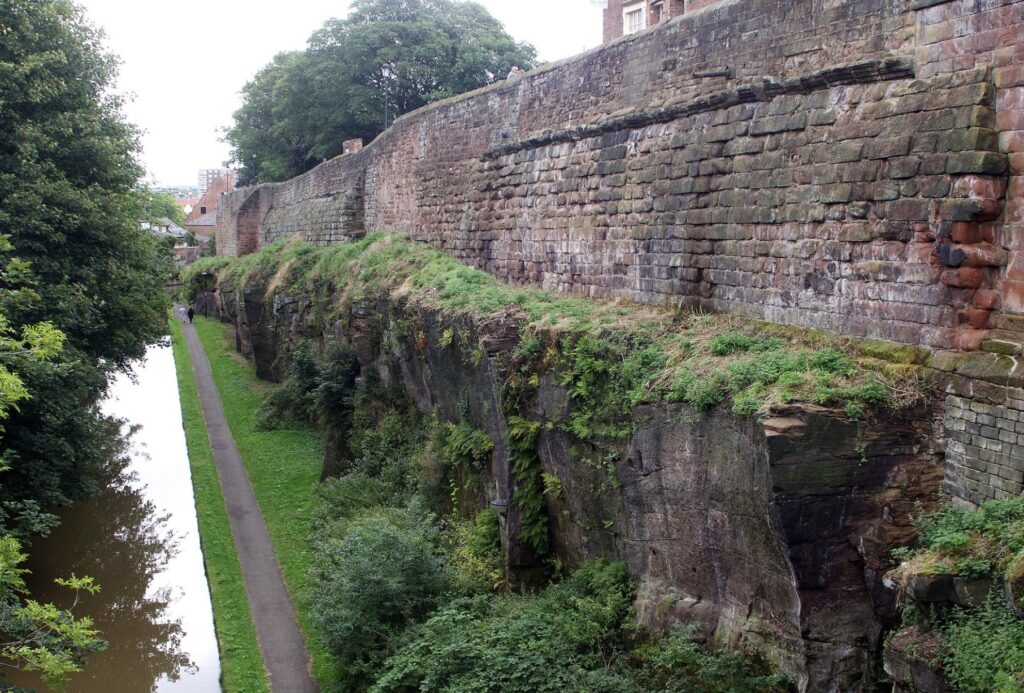
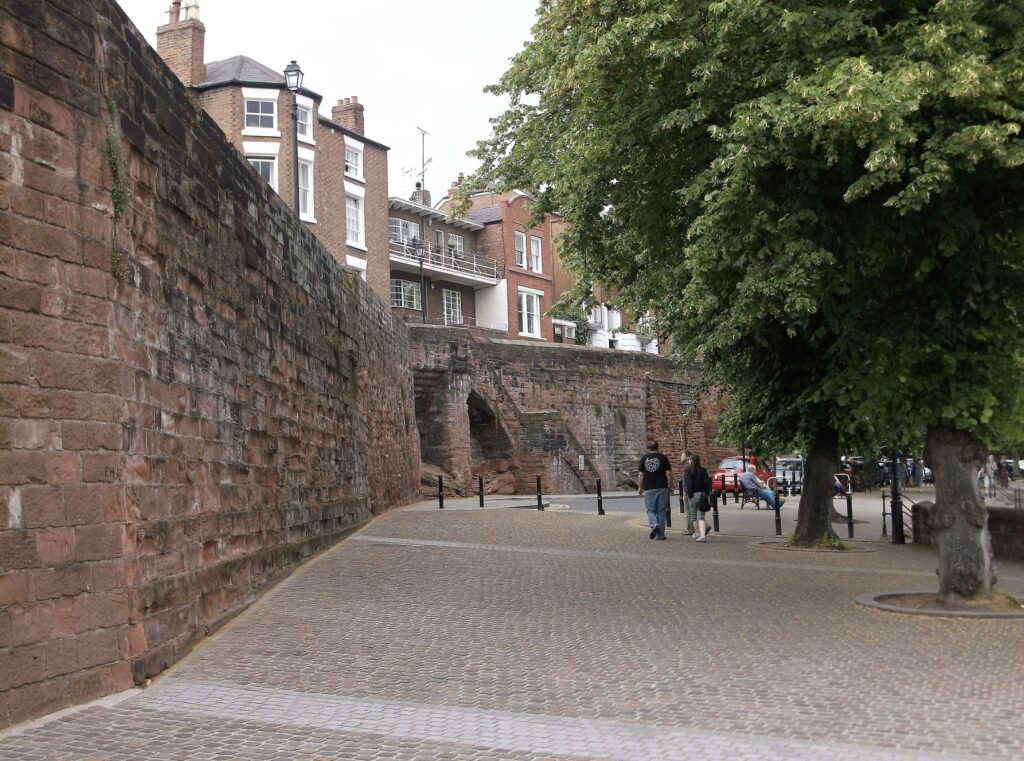
- Chester Cathedral: This stunning Gothic cathedral dates back to the 11th century and features beautiful architecture, medieval carvings, stained glass windows, and a tranquil cloister garden.
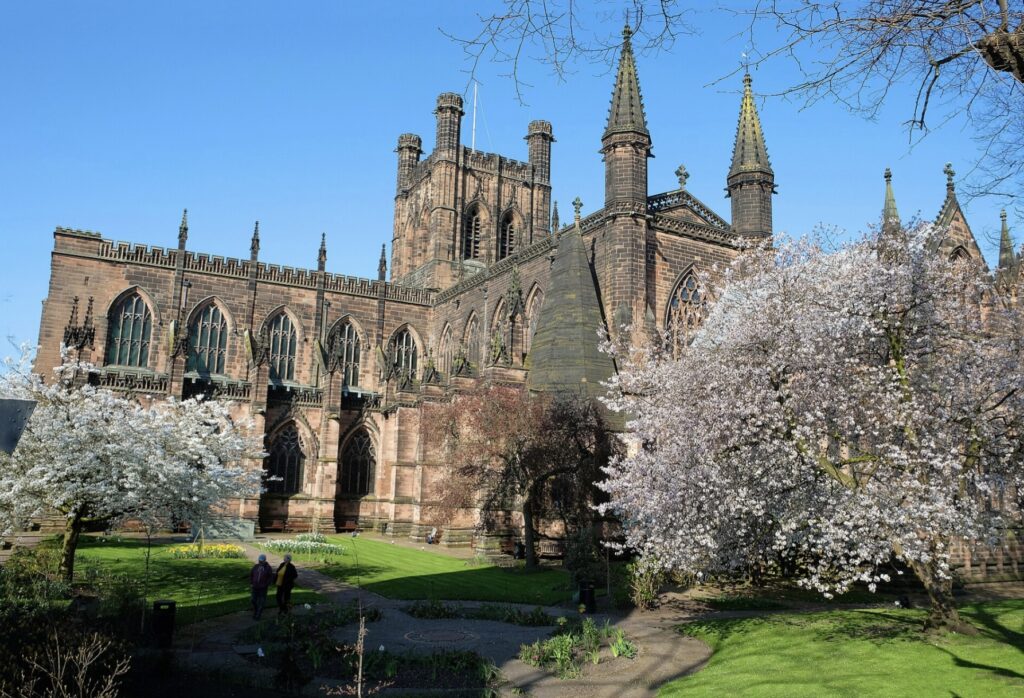
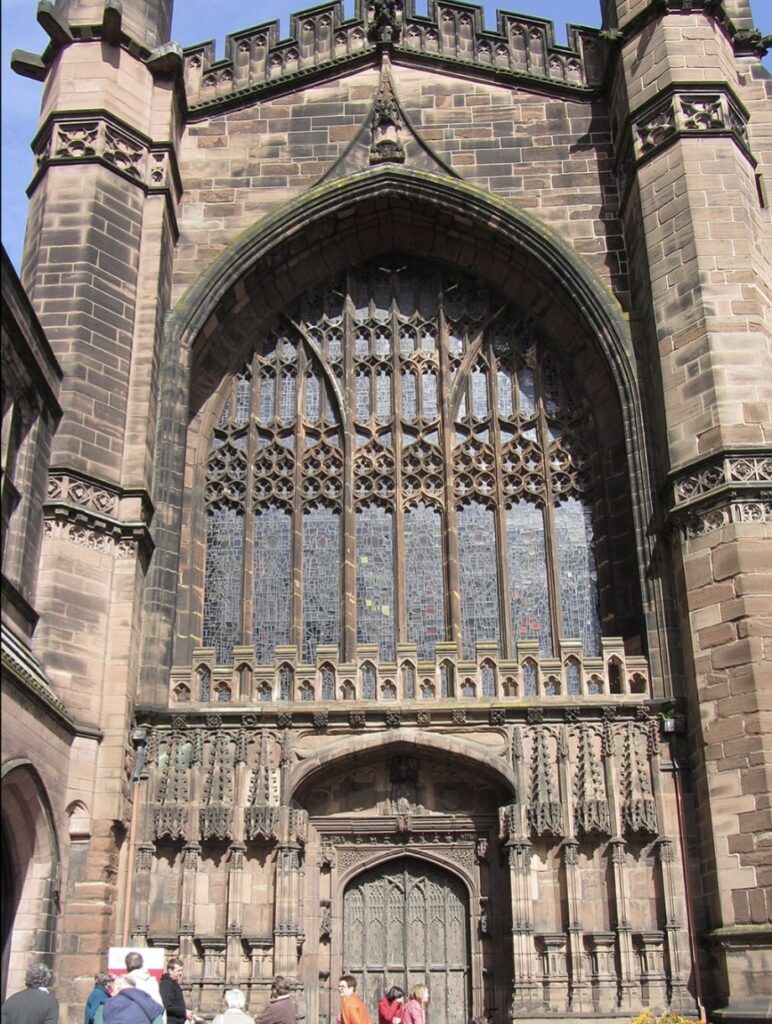
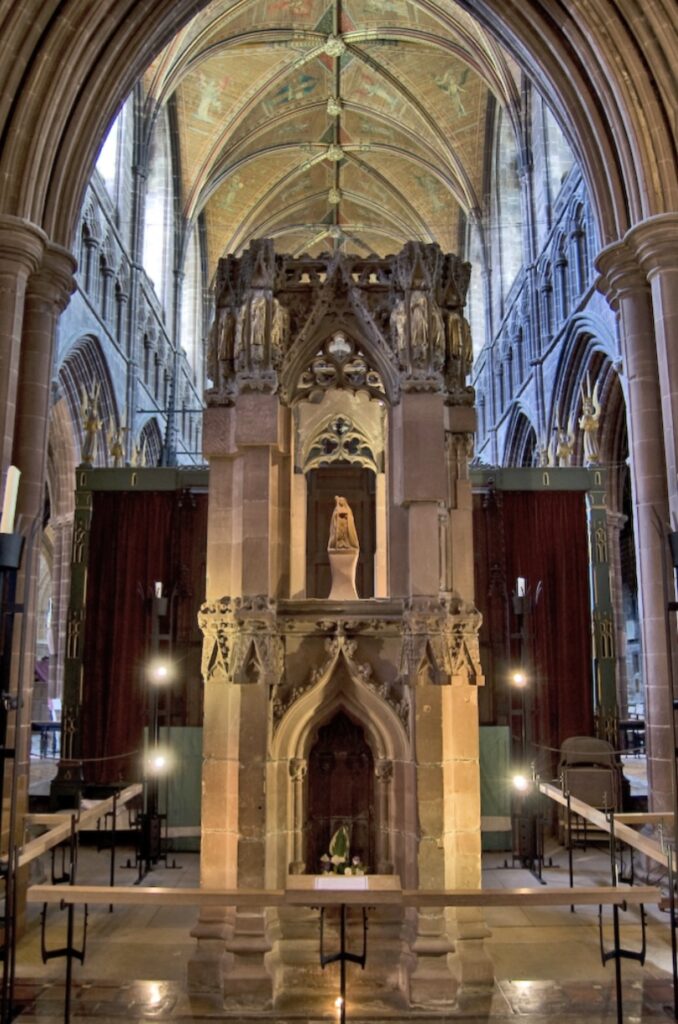
- The Rows: These distinctive medieval, two-tiered galleries run along four main streets, offering a unique shopping experience. The Rows feature a mix of historical timber-framed buildings and more modern structures.
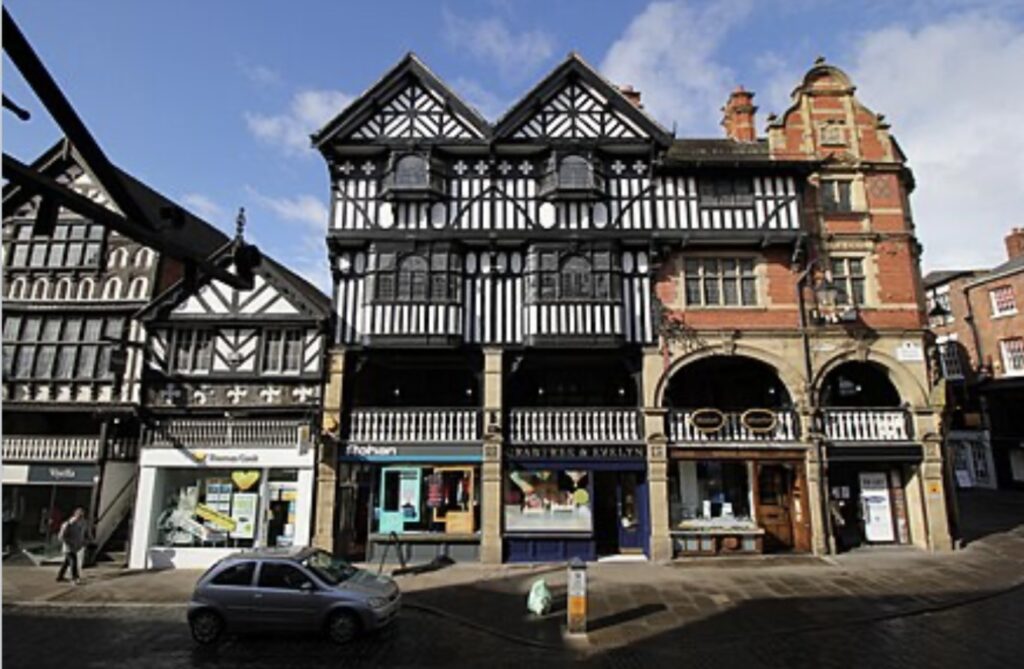
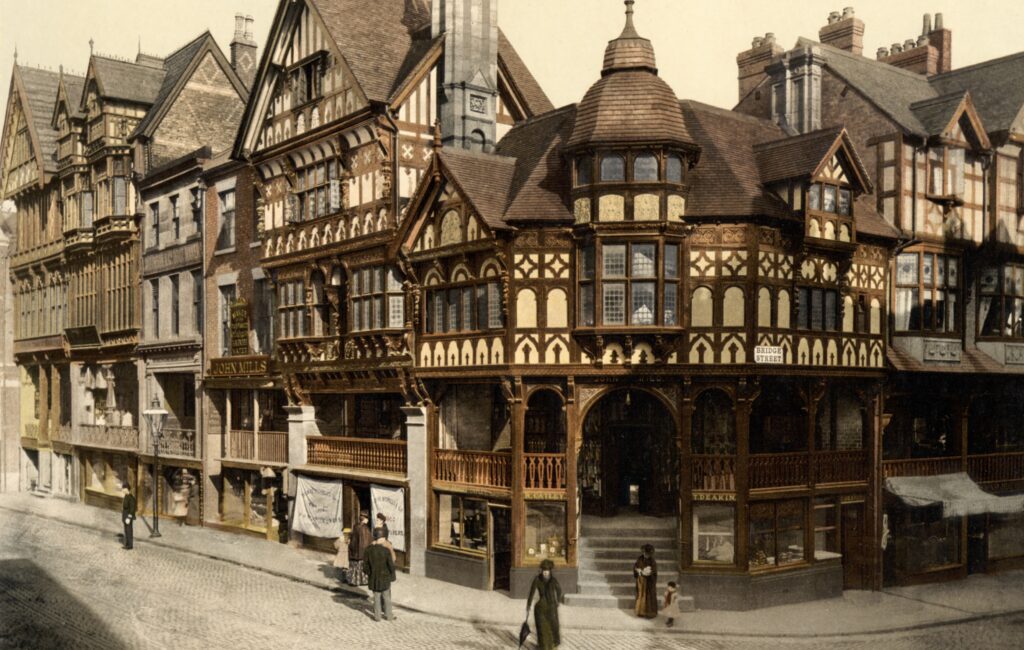
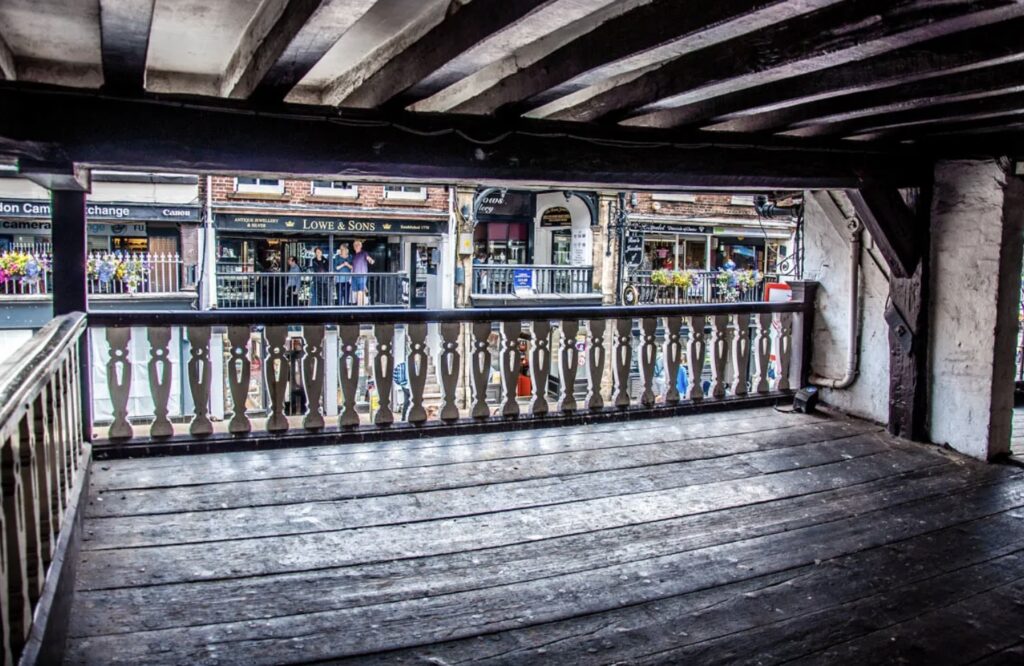
- Chester Roman Amphitheatre: The largest Roman amphitheater in Britain, this historical site offers insights into the city’s Roman past and has been partially excavated.
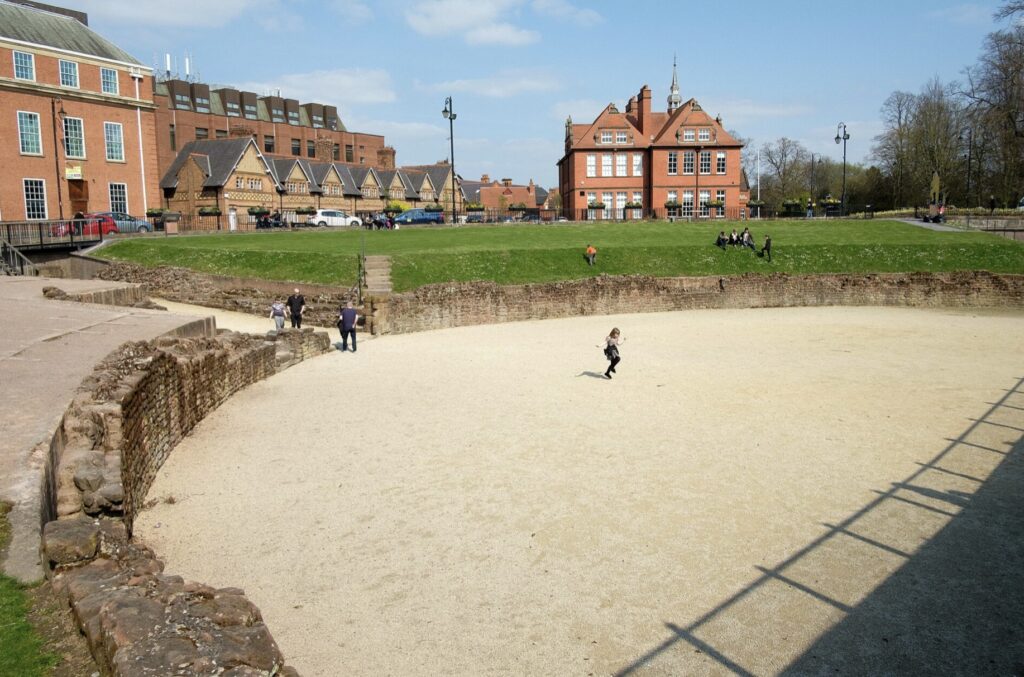
- Chester Castle: Originally built by the Normans in the 11th century, the castle complex includes the Agricola Tower and the Chester Military Museum, which explores the military history of the region.
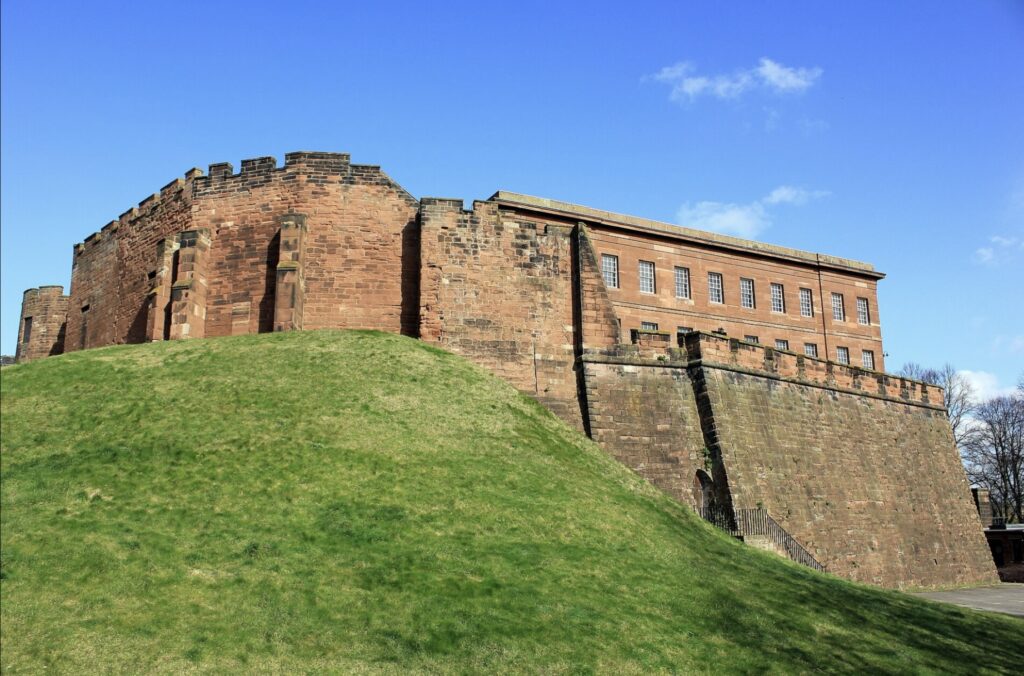
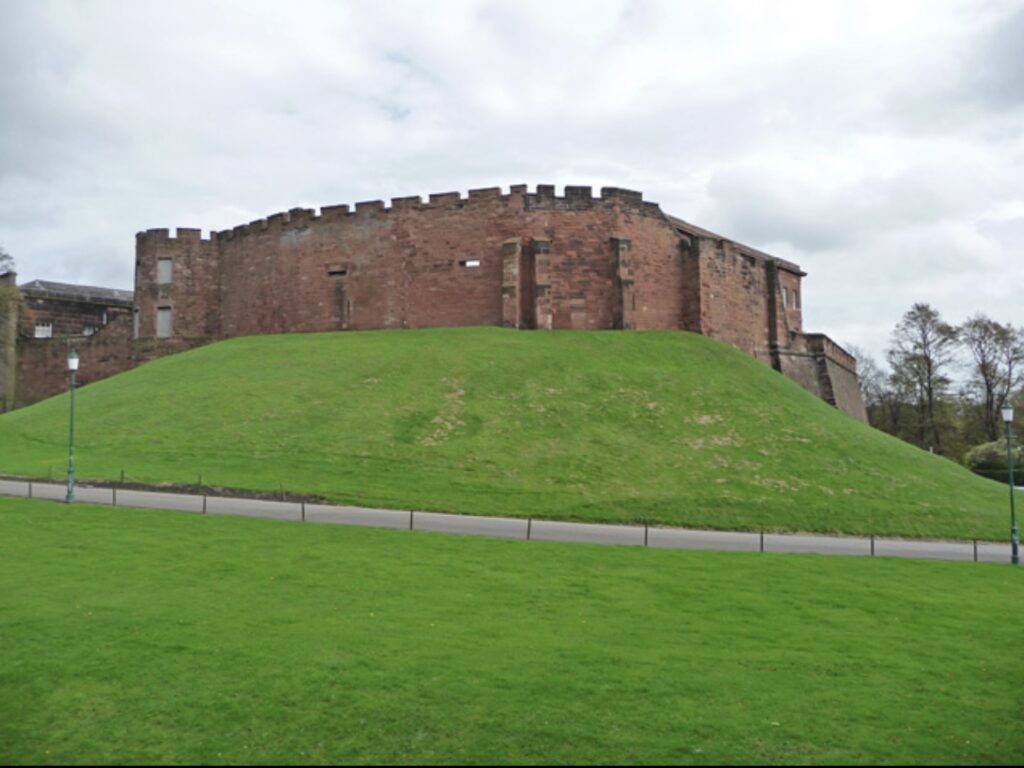
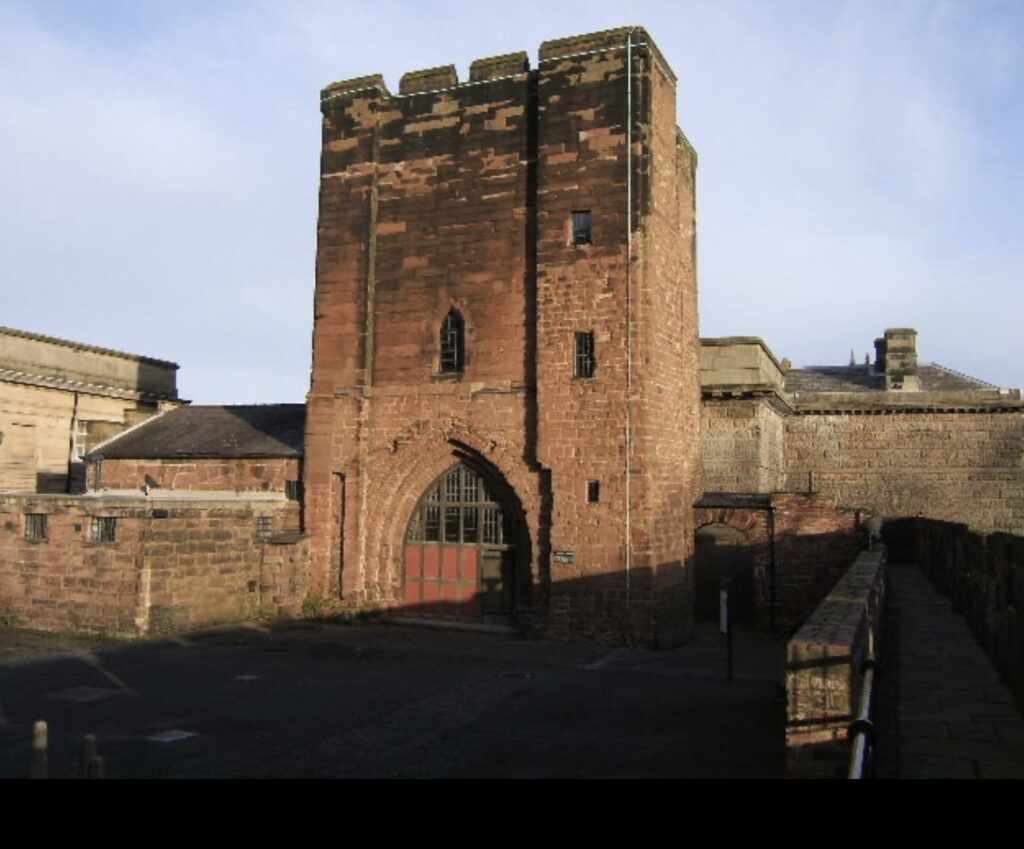
- Eastgate Clock: Often cited as the second most photographed clock in England after Big Ben, the Eastgate Clock stands on the site of the original entrance to the Roman fortress.
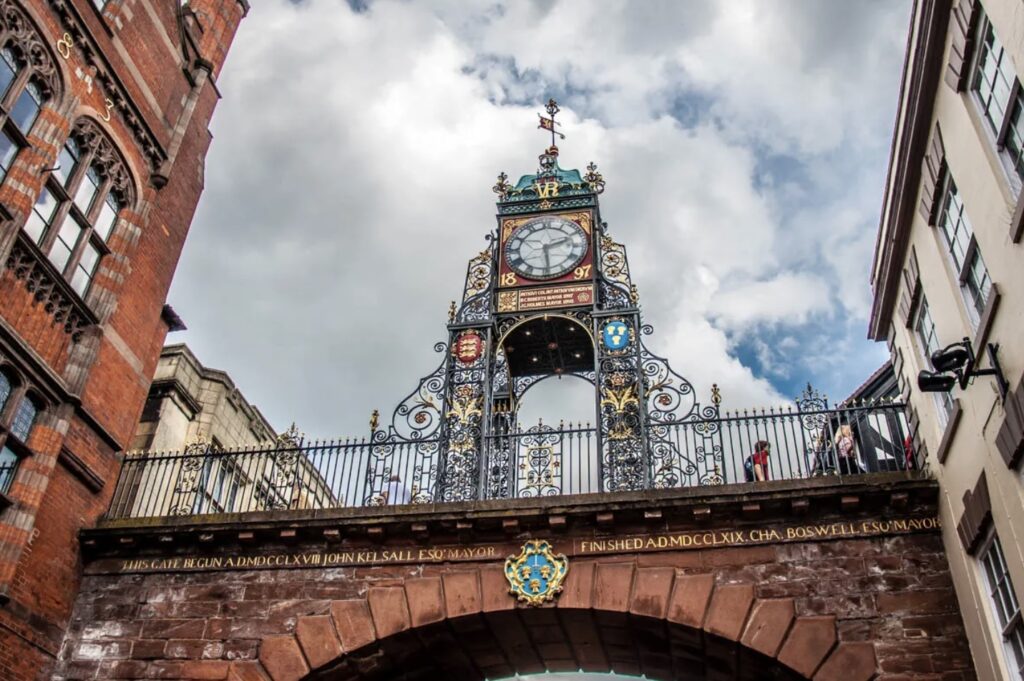
- Chester Racecourse: Known as the Roodee, this racecourse is the oldest still in operation in England and hosts regular horse racing events.
- Grosvenor Museum: This museum offers exhibits on Chester’s history, including its Roman origins, natural history, and fine art collections.
- St John’s Church: One of the oldest surviving churches in Chester, dating back to the 11th century, it features a mix of Norman and Gothic architecture.
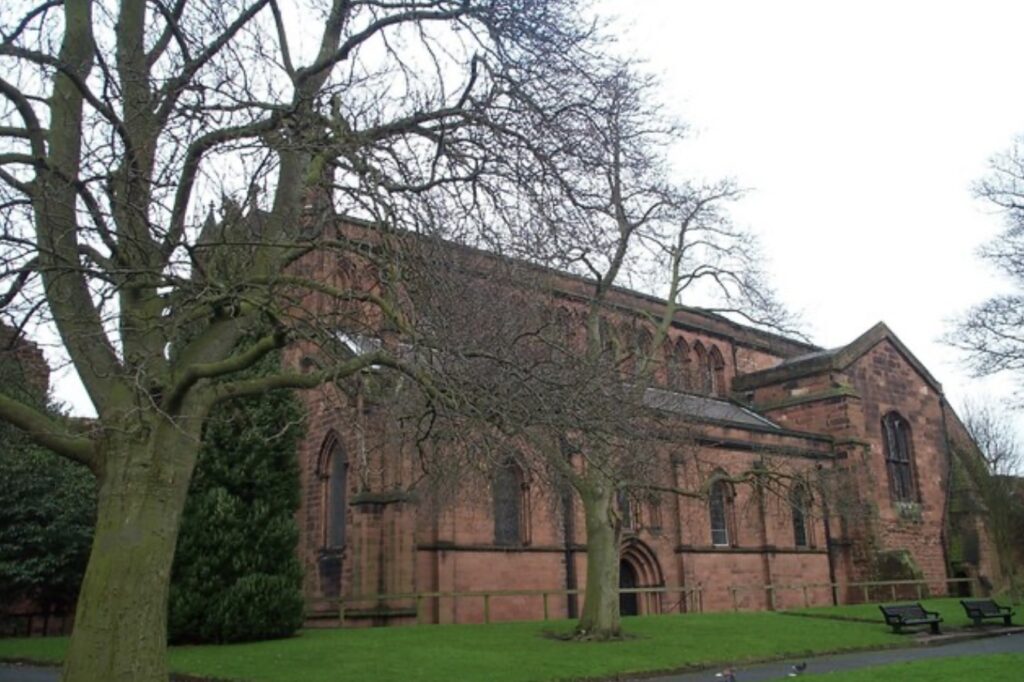
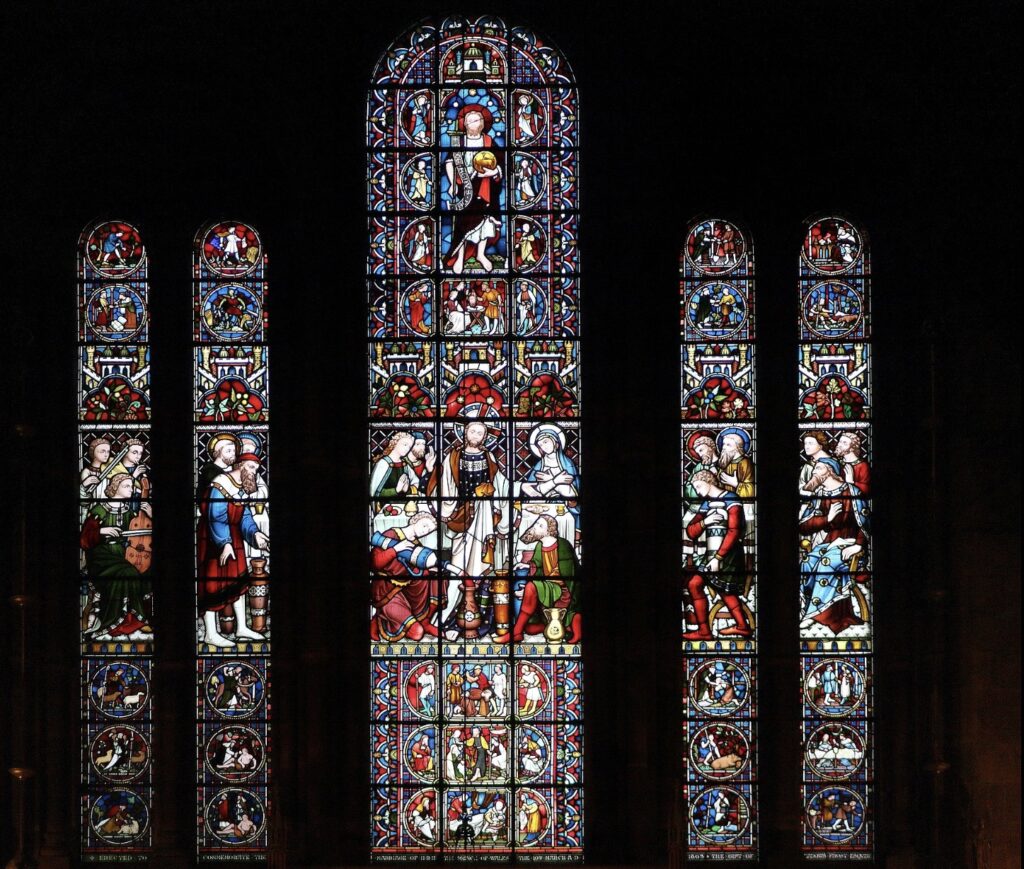
- Chester Zoo: One of the largest and most popular zoos in the UK, known for its conservation efforts and diverse collection of animals.
- The Grosvenor Park: A beautifully landscaped Victorian park offering gardens, a miniature railway, and views of the River Dee.
- Cheshire Military Museum: Located within Chester Castle, this museum details the history of four famous British army regiments associated with Cheshire.
- The Roman Gardens: These gardens showcase a variety of Roman artifacts and are a peaceful spot to explore remnants of the city’s ancient past.
- The Blue Planet Aquarium: Located near Chester, it offers a range of aquatic exhibits, including a walk-through shark tunnel.
- Cheshire Oaks Designer Outlet: A popular shopping destination near Chester, offering a wide range of brands at discounted prices.
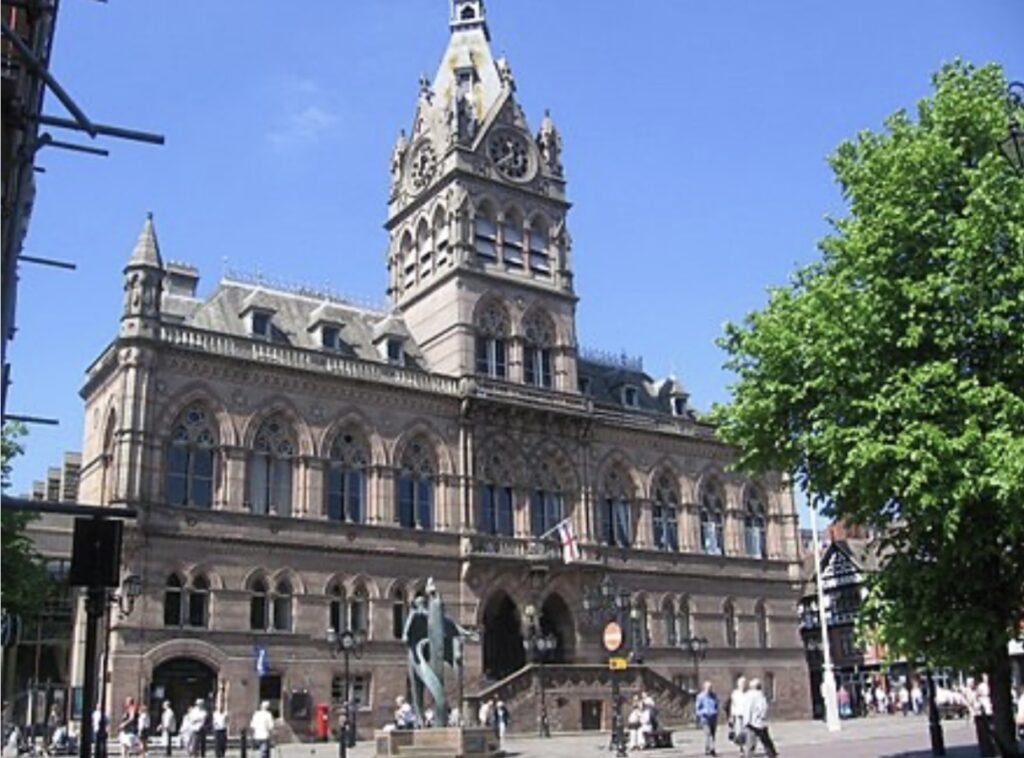
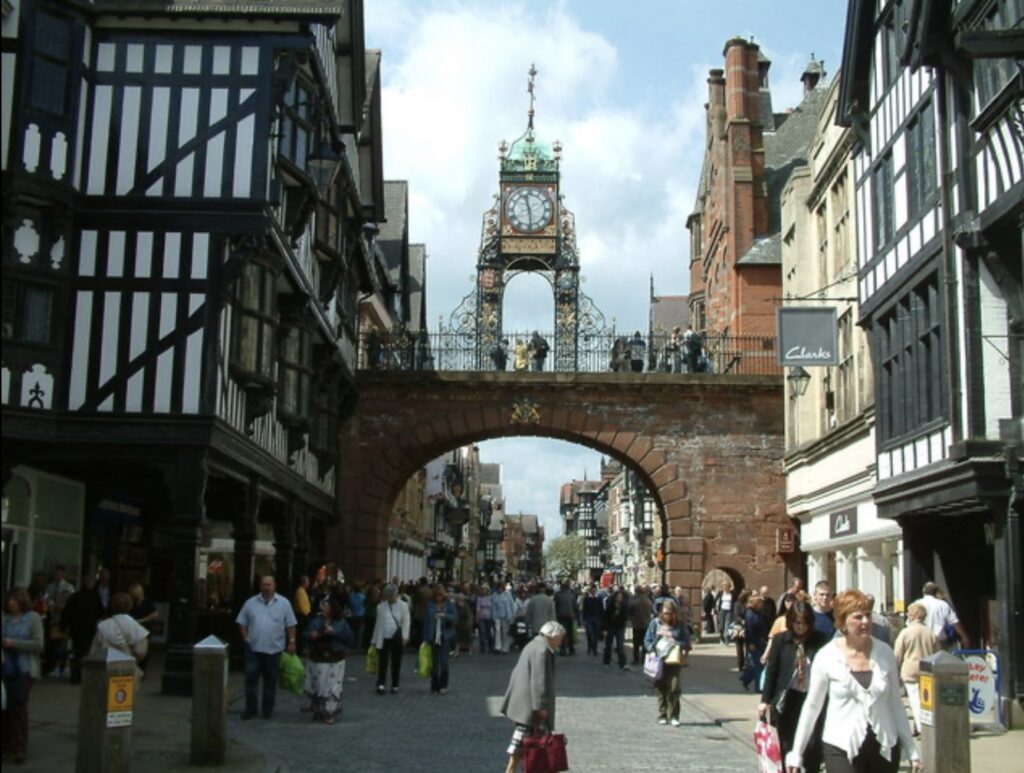
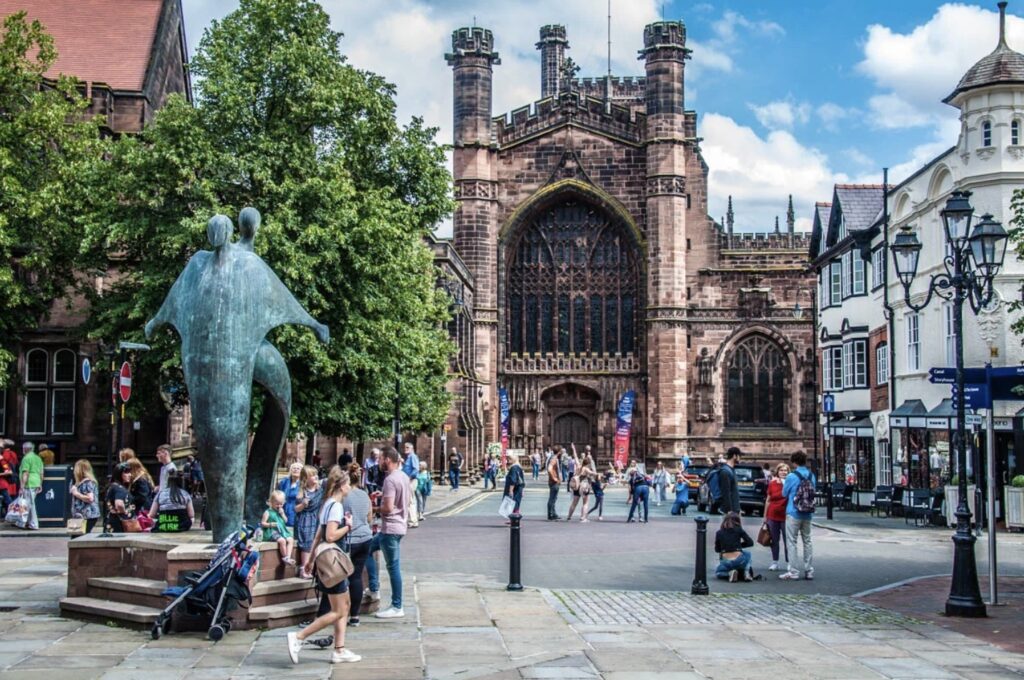
Chester Cathedral is a remarkable example of English medieval ecclesiastical architecture, with unique features and characteristics that reflect its long and complex history. Here are some of the key architectural features and unique aspects of Chester Cathedral:
1. Gothic Architecture:
- Nave and Choir: The cathedral’s nave and choir showcase Gothic architecture, characterized by pointed arches, ribbed vaults, and large windows. The height and lightness of the Gothic style create an impressive and uplifting interior space.
- Windows: The large stained glass windows are notable features, especially the East Window, which dates back to the 14th century and depicts scenes from the Bible.
2. Norman and Romanesque Elements:
- Origins: The current building was originally a Benedictine abbey church, founded in 1092. While much of the earlier Norman architecture has been replaced or incorporated into later Gothic work, some Romanesque features, such as rounded arches, can still be seen in certain parts of the cathedral, especially in the older sections.
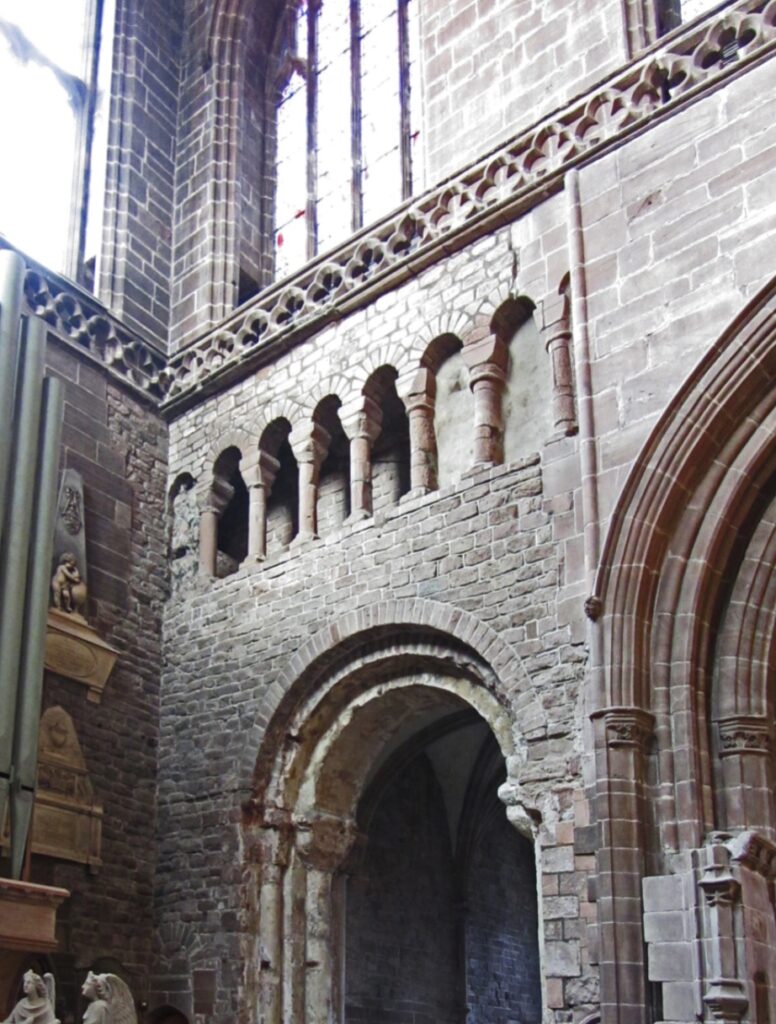
3. Unique Layout:
- Asymmetrical Plan: Unlike many cathedrals, Chester Cathedral has an asymmetrical layout. The central tower is not placed exactly at the crossing of the nave and transepts, giving the building a distinctive, slightly irregular appearance.
4. Woodwork and Misericords:
- Choir Stalls: The wooden choir stalls in Chester Cathedral are finely carved and include a series of misericords (small folding seats). These misericords, dating from the 14th and 15th centuries, are particularly notable for their intricate and often humorous carvings depicting biblical scenes, animals, and mythical creatures.
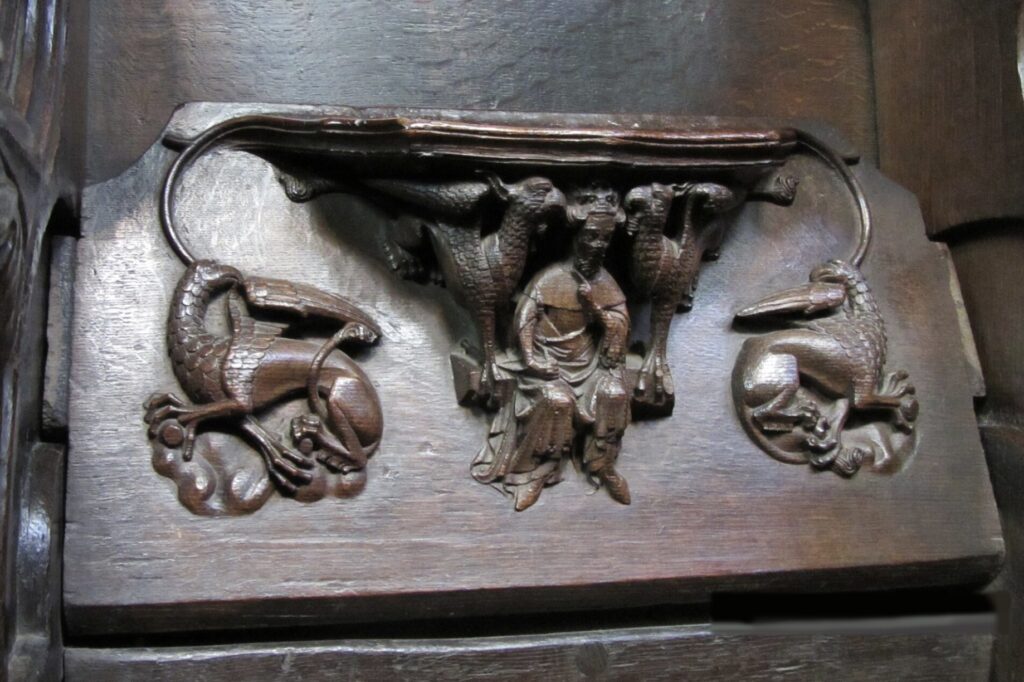
5. Chapter House:
- Octagonal Design: The Chapter House, built in the early 13th century, is an octagonal structure with a vaulted ceiling. It is one of the oldest parts of the cathedral and features an elegant Early English Gothic style with slender columns and pointed arches.
6. Cloister and Refectory:
- Cloister: The cloister, a quadrangle with a covered walkway, offers a peaceful area for reflection and provides access to various parts of the cathedral. The cloister garden is a tranquil spot surrounded by the cathedral’s architecture.
- Refectory: The refectory, now used as a café, features a 17th-century timber roof and a large, medieval wall painting of the Last Supper, making it a significant historical and architectural space.
7. Lady Chapel:
- Decorative Elements: The Lady Chapel, located at the eastern end of the cathedral, contains exquisite stone carvings and stained glass windows. It is dedicated to the Virgin Mary and is a place of quiet prayer and contemplation.
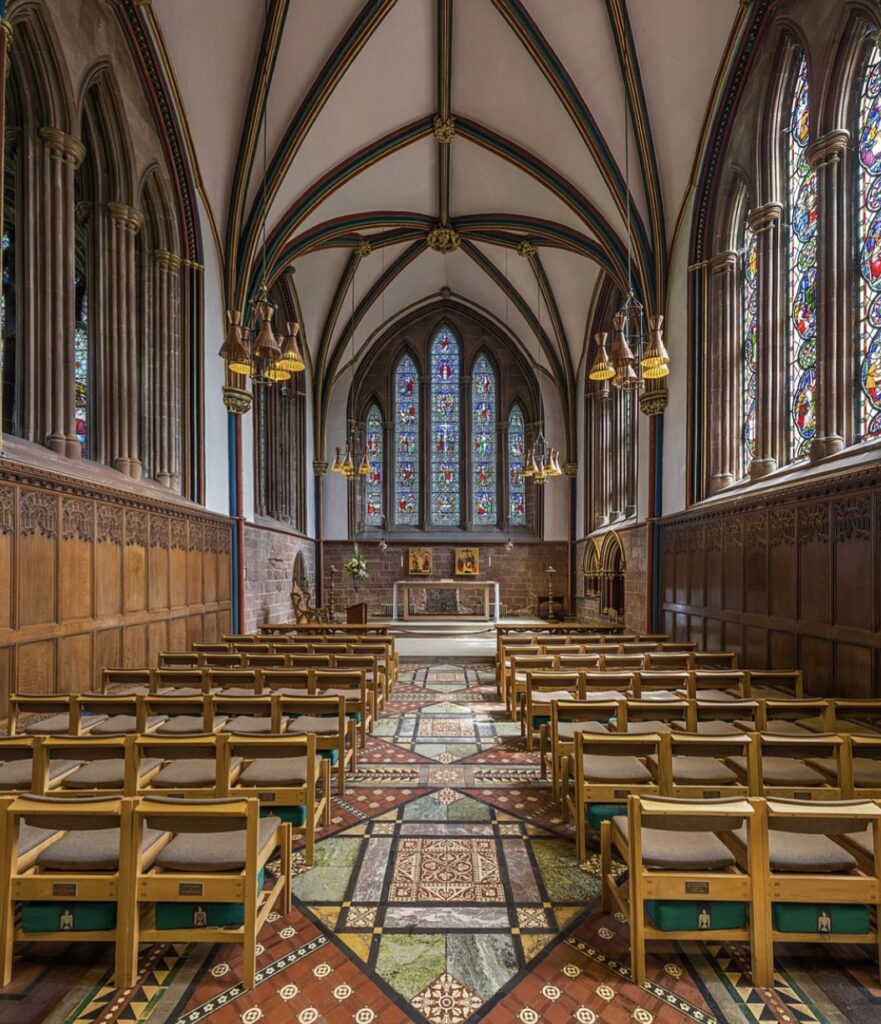
8. Tower and Bell:
- Central Tower: The central tower is a dominant feature of the cathedral’s exterior. It houses a set of bells, including the “Great Bell” known as “Big Ed,” which is one of the heaviest in the UK.
- Tower Tour: Visitors can climb the tower for panoramic views of Chester and the surrounding countryside.
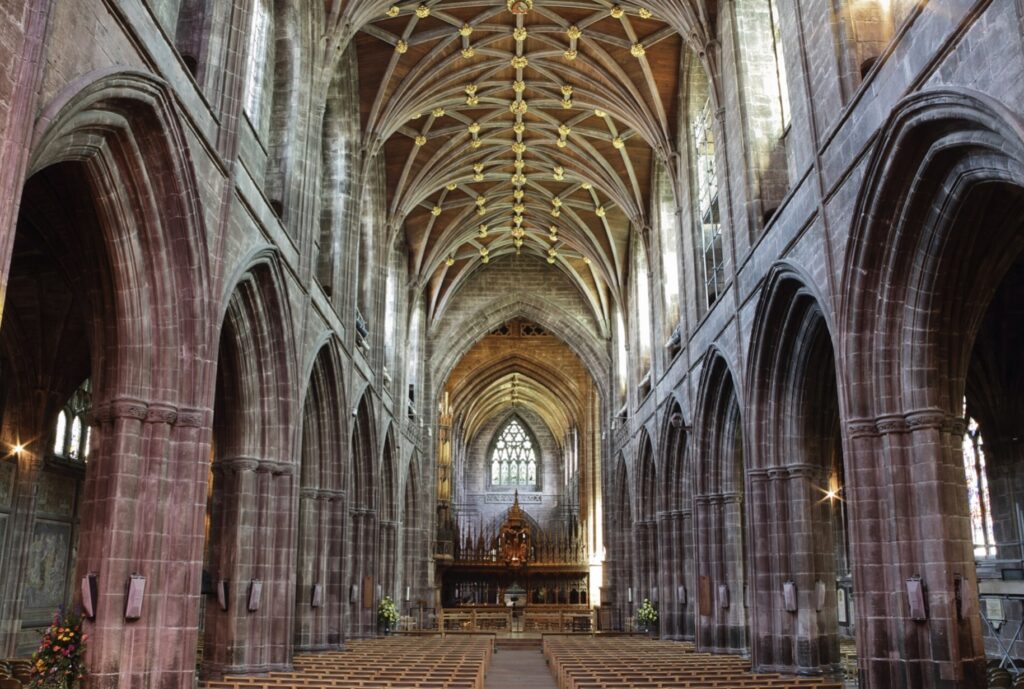
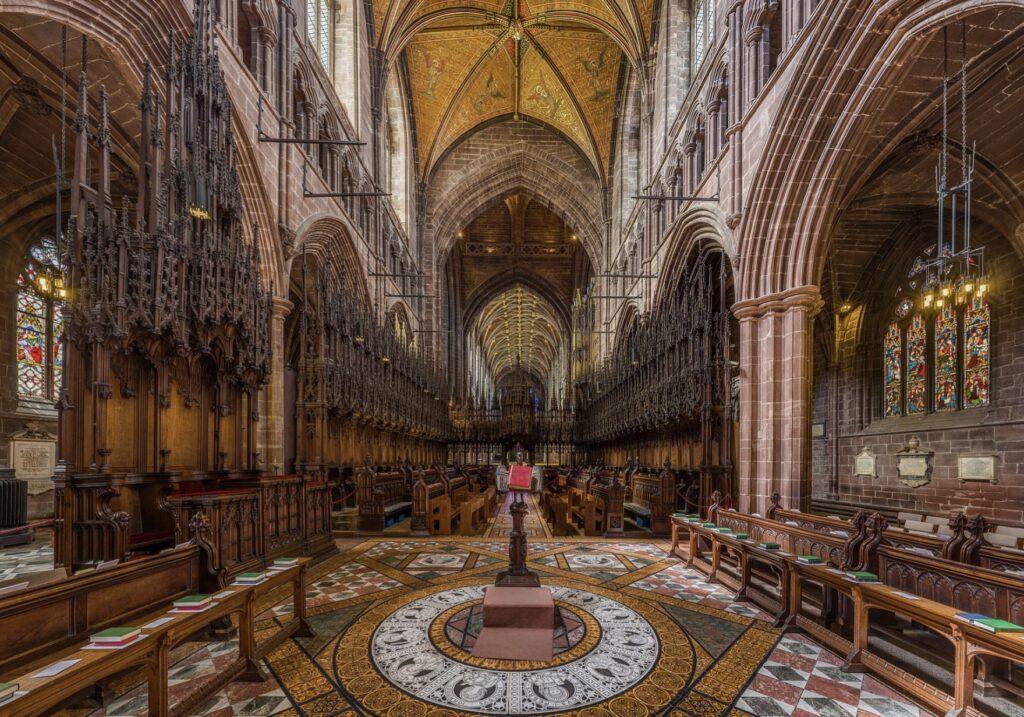
9. Medieval Quire:
- Rood Screen: The quire features a beautifully ornate wooden screen separating it from the nave. The screen is a fine example of Gothic woodwork with intricate tracery.
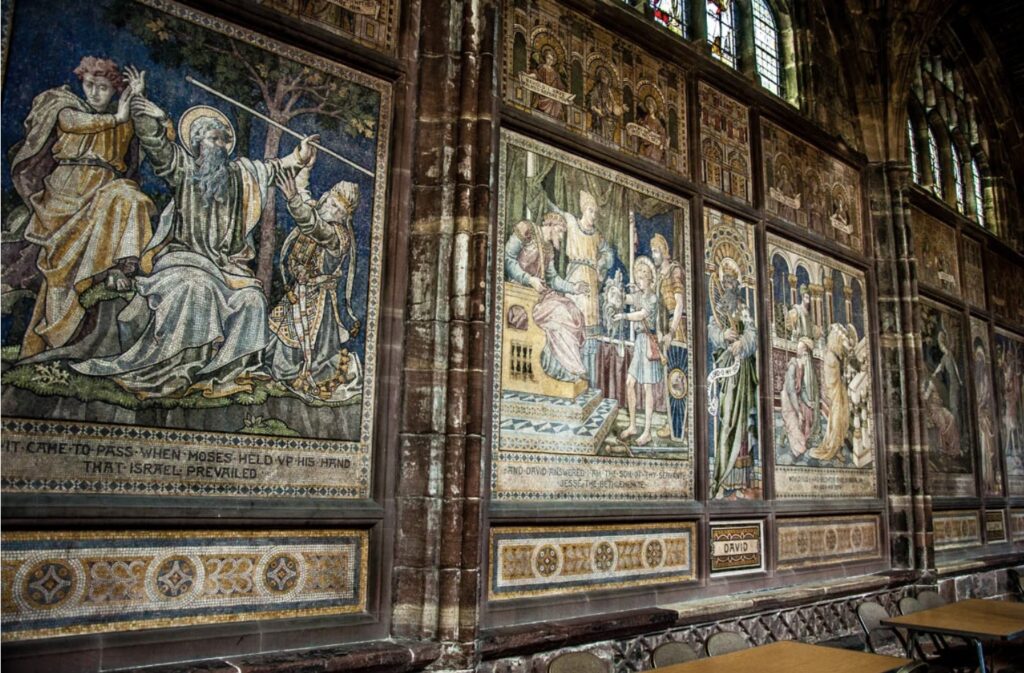
Chester Cathedral’s unique combination of Gothic and Romanesque styles, coupled with its distinctive layout, rich woodwork, and historical artifacts, make it a fascinating example of English ecclesiastical architecture.
The Rows are a unique architectural feature found in the city center of Chester, England. They consist of two levels of shops, with one set at street level and another set above, accessed by covered walkways. These covered galleries are supported by stone columns and are found along four main streets: Eastgate Street, Watergate Street, Northgate Street, and Bridge Street.
Date and History:
The exact origins of the Rows are unclear, but they are believed to date back to the late 13th and early 14th centuries. The Rows likely evolved from medieval buildings that featured ground-floor storage or commercial spaces with residential quarters above. Over time, these structures were modified to include the distinctive two-tiered shopping experience seen today.
The design of the Rows is unique to Chester and does not have a direct counterpart in other British cities. The upper level of the Rows is thought to have been created as an expansion of living and retail space without compromising street-level accessibility. The covered walkways on the upper level provided protection from the weather, making shopping more comfortable.
Location:
The Rows are located along the four main streets of Chester’s city center, forming a grid-like layout typical of Roman urban planning, which has influenced the development of Chester over the centuries.
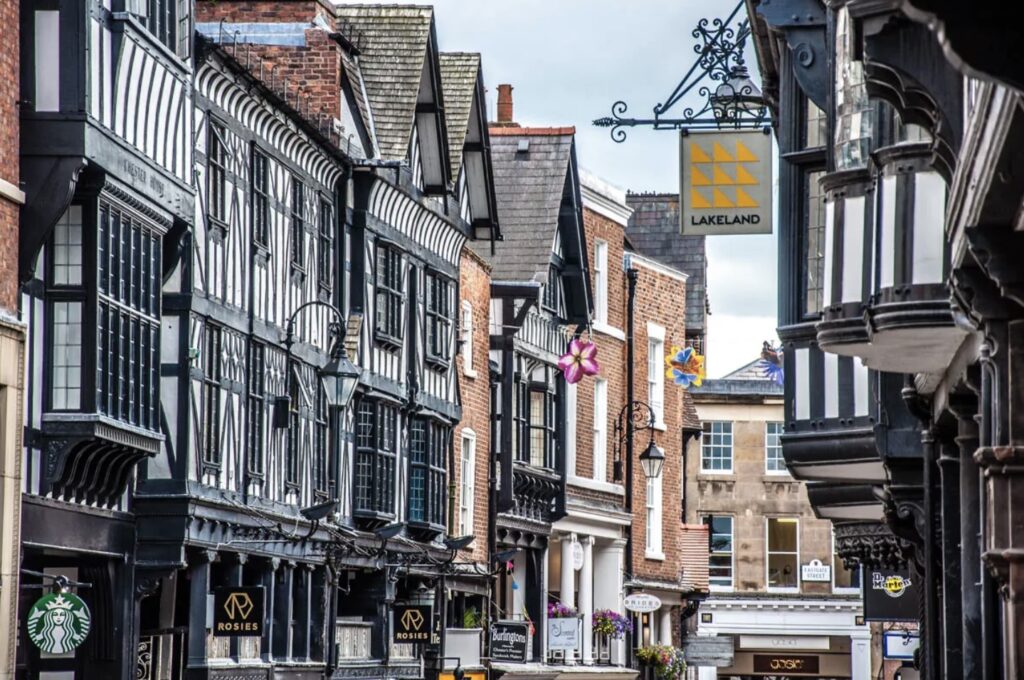
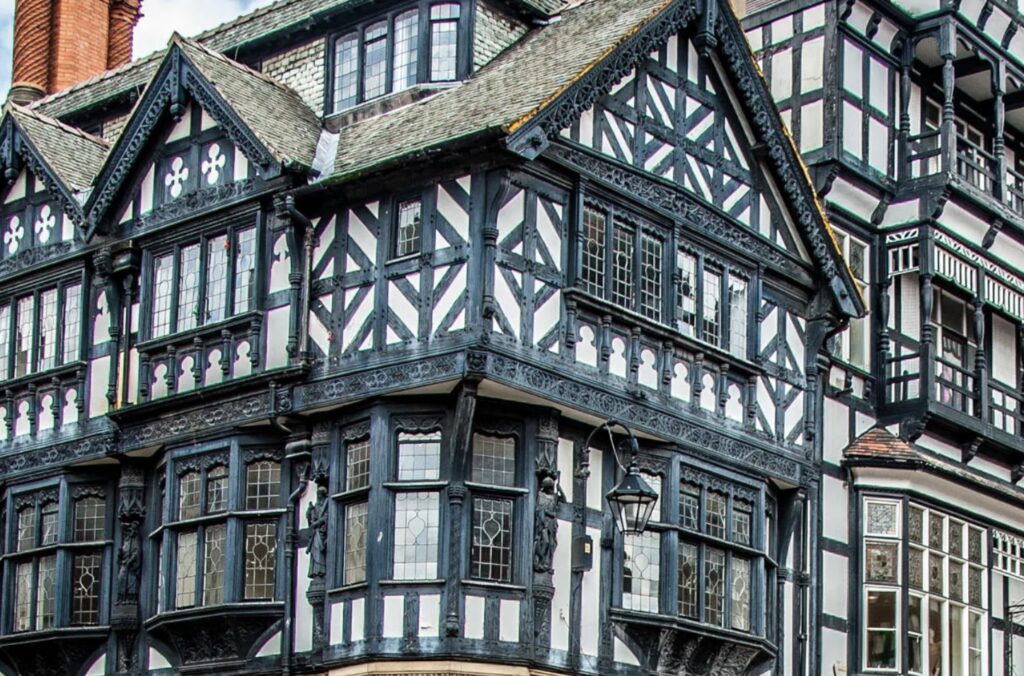
The Chester city walls are one of the most complete and best-preserved sets of Roman and medieval defensive walls in Britain. They form a continuous circuit around the historic city center of Chester, enclosing an area of approximately 2 miles (3.2 kilometers).
Historical Overview:
- Roman Origins (79-80 AD): The construction of the Chester city walls began during the Roman occupation when Chester was known as Deva Victrix. The Romans built the original stone fortress walls to protect the city, which served as a major military base. The walls enclosed a large rectangular area with gates at the cardinal points, which were connected by straight roads.
- Medieval Modifications: After the Roman period, the walls continued to serve a defensive purpose. In the medieval period, the walls were extensively rebuilt and strengthened. The original Roman gates were replaced, and additional towers and gatehouses were added to improve the city’s defenses.
- Later Additions and Preservation: The walls underwent further modifications and repairs in the following centuries, particularly during the English Civil War when Chester was besieged. In the 18th and 19th centuries, the walls were preserved and restored, with some sections adapted for public use.
Key Features:
- Walkway: The walls feature a continuous walkway, known as the “wall walk,” that runs along the top of the walls. This walkway is accessible to the public and offers a scenic route around the city. It is elevated, providing excellent views of Chester’s historic buildings, the River Dee, and the surrounding countryside.
- Gates and Towers: The walls include several historic gates and towers, such as:
- Eastgate: Featuring the famous Eastgate Clock, one of the city’s most iconic landmarks.
- Watergate: Leading towards the River Dee and originally providing access to the port.
- Northgate: Overlooking the site of the Roman fortress’s northern entrance.
- Bridgegate: Located near the Old Dee Bridge, a crossing point over the river.
- King Charles’ Tower: Named after King Charles I, who is said to have watched the battle during the Civil War from this point.
- Morgan’s Mount: A raised platform on the walls, used for defensive purposes and offering views of the Welsh hills.
- Roman Gardens: Adjacent to the walls, the Roman Gardens display various Roman artifacts and remnants of the original fortifications.
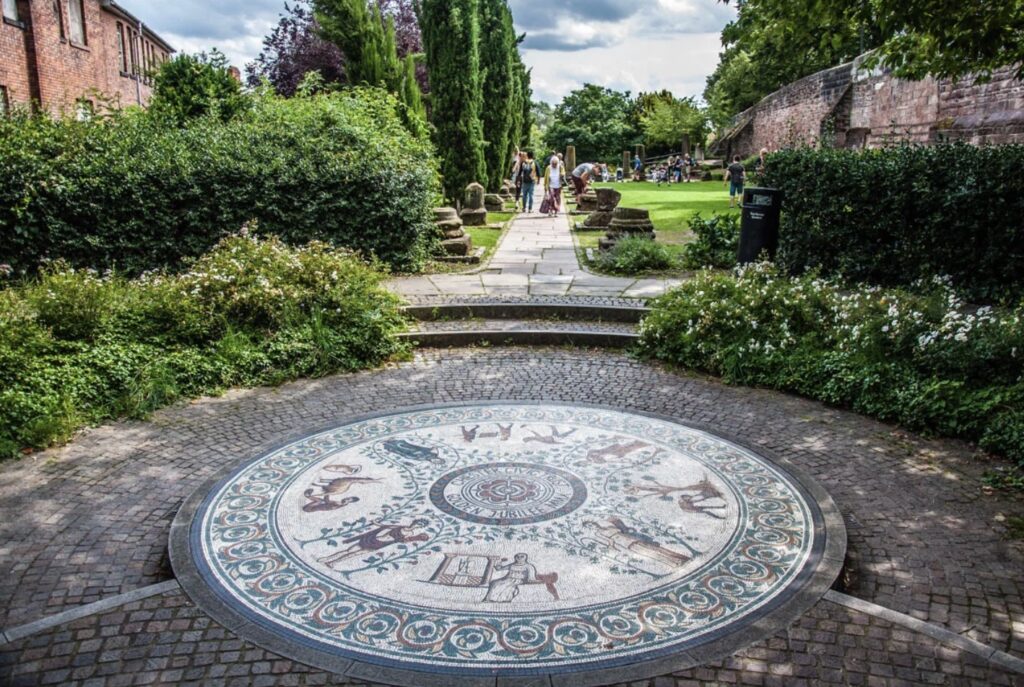
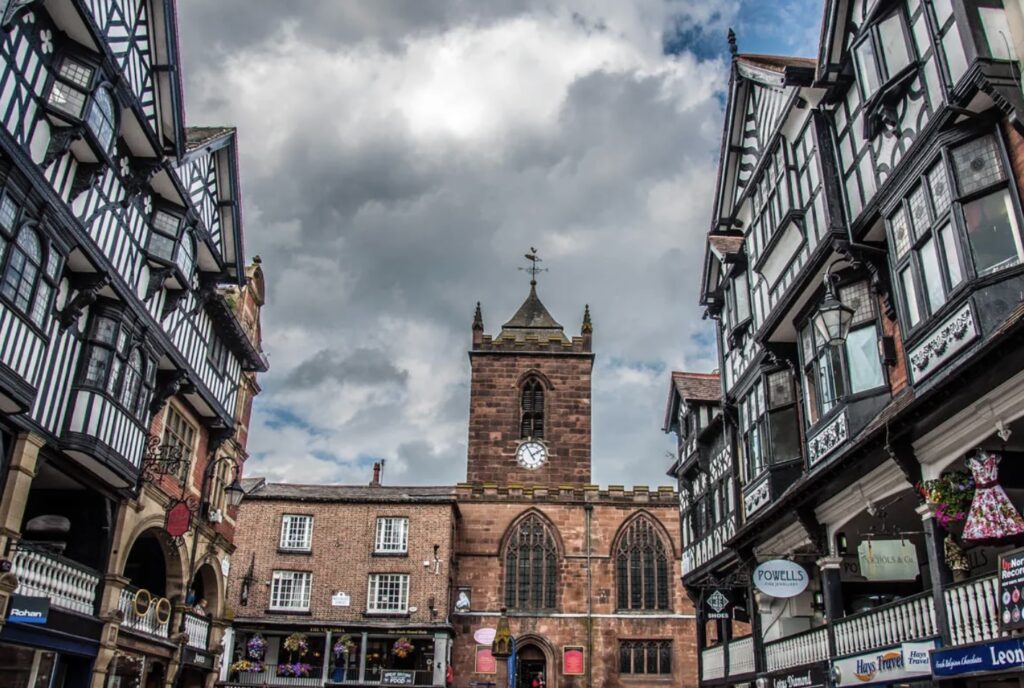
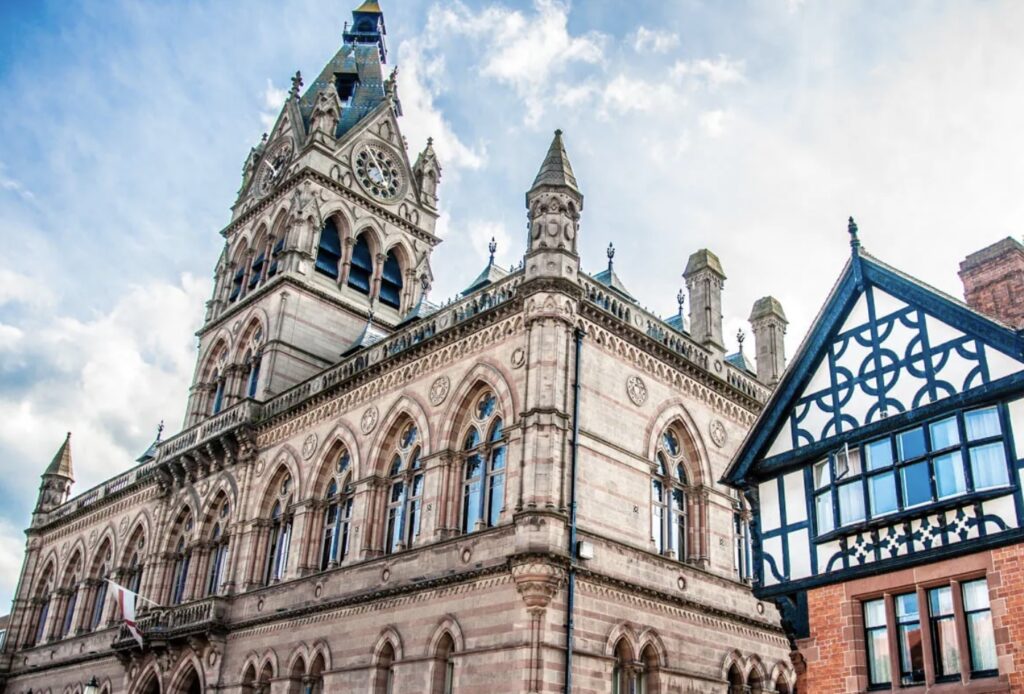
One-Day Itinerary for Visiting Chester:
Morning
**1. *Breakfast at a Local Café:*
Start your day with a hearty breakfast at one of Chester’s charming cafés. Look for options serving traditional British breakfast or local specialties like Cheshire cheese on toast.
2. Explore the Chester City Walls:
Begin your sightseeing with a walk along the Chester city walls. This 2-mile circular route offers a great way to see the city from above and provides stunning views of landmarks like the Eastgate Clock, Chester Cathedral, and the River Dee. Don’t miss the opportunity to explore the various gates and towers, such as King Charles’ Tower and Morgan’s Mount.
3. Visit Chester Cathedral:
After completing the wall walk, head to Chester Cathedral. Spend some time exploring this beautiful Gothic building, its stunning stained glass windows, and the tranquil cloister garden. If available, consider joining a guided tour or climbing the cathedral tower for panoramic views.
Lunch
4. Lunch at a Traditional Pub:
Enjoy a traditional pub lunch in Chester. Pubs often serve local specialties such as Cheshire pork pies, steak and ale pie, or fish and chips. Pair your meal with a locally brewed ale or cider.
Afternoon
5. Explore The Rows:
Spend the afternoon shopping and exploring The Rows, Chester’s unique two-level shopping galleries. Browse through boutique shops, antique stores, and independent retailers. The Rows are not only great for shopping but also offer a glimpse into Chester’s medieval architecture.
6. Grosvenor Museum:
Visit the Grosvenor Museum to learn more about Chester’s history, from its Roman origins to the present day. The museum features a variety of exhibits, including Roman artifacts, natural history displays, and fine art collections.
7. Walk Along the River Dee:
Take a leisurely stroll along the River Dee, enjoying the scenic views and the peaceful atmosphere. You can also rent a rowboat or take a river cruise for a different perspective of the city.
Evening
8. Dinner at a Local Restaurant:
For dinner, choose a restaurant that showcases local Cheshire cuisine. Look for dishes featuring Cheshire cheese, local meats, and fresh produce. Many restaurants in Chester focus on using locally sourced ingredients, offering a taste of the region’s culinary heritage.
9. Evening Entertainment:
If you have time and energy, consider attending a performance at the Storyhouse, Chester’s cultural center, which hosts theater productions, live music, and cinema screenings. Alternatively, you can relax with a drink at one of the city’s cozy pubs or cocktail bars.
10. Night Stroll and Eastgate Clock:
End your day with a leisurely night stroll through the city center, admiring the illuminated buildings and the iconic Eastgate Clock. This is a perfect time to enjoy the quieter side of Chester and take in the historic atmosphere.
This itinerary offers a blend of Chester’s historical sites, cultural experiences, shopping, and local food, providing a comprehensive and enjoyable day in the city.
